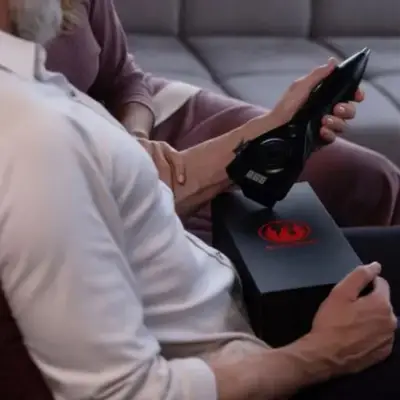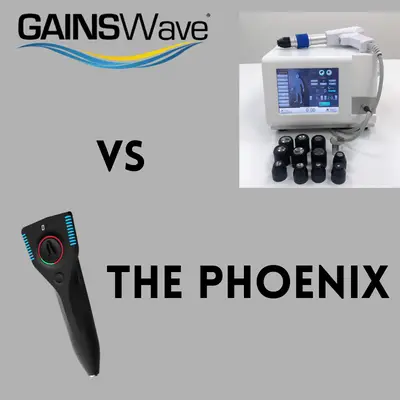When dealing with pain, you want to get a system that will help relieve it. But when facing the choice between two systems like TENS and Microcurrent, how do you make a decision?
What’s the difference between TENS units and Microcurrent? While TENS and Microcurrent are both used for pain relief, they differ in how they go about it. While TENS uses strong electrical impulses to block pain, Microcurrent boosts the healing process by shooting low electrical impulses into the affected area, resembling the natural healing process in the body.
To find out more about TENS, Microcurrent, and their most significant differences, read on.
What is TENS?
TENS stands for transcutaneous electrical nerve stimulation. In essence, this is a device that people use to relieve their pain. It will have adhesive pads that should be attached to proper areas on your skin, and the unit is powered by batteries.
It works by shooting small electrical impulses to your body, which then reduces the ability of your nervous system to transmit pain to the brain. The process is similar to the one caused by endorphins.
You would use a TENS unit to treat:
- Back pain
- Pain after a surgery
- Pain in your joints
- Period pain or possibly labor pain
People with different conditions can use it too, if their doctor approves.
Each of these units features controls that can help you decide what amount of pain relief you want. You can change the intensity, the frequency, or the duration. This allows you to have complete control over this treatment, and it can help you get the right amount of pain relief for your problem.
For example, the frequency change can help you reduce or increase the number of electrical pulses. There’s a higher option for the number of cycles per second, which is usually between 80 and 120, and there’s a lower option, which ranges between 1 and 20. Each of these settings is suitable for different conditions.
TENS has a lot of benefits since it’s not invasive, and it works well. It’s also popular because reducing pain this way can also help people ditch addictive pills. People also like TENS since you can carry it around easily, even in your pocket, and use it whenever you need it.
However, even non-invasive TENS units have their side effects. For instance, the pads can cause irritation or an allergic reaction. If this is the case, you can replace them with hypoallergenic ones. Also, the electrical stimulation caused by TENS often leaves uncomfortable side effects like tingling.
The adhesive electrode pads shouldn’t be used on the front part of the neck since it could cause many different issues, most notably spasms. Next, the electrodes could also injure your eyes if you place them there.
TENS units are a safe solution for a great number of people, but some should still avoid it. Here are some of those groups, as recommended by medical experts.
- Women during pregnancy, in their abdominal area
- People who suffer from epilepsy since it can cause seizures
- People with known heart issues
- People with metal or electrical implants
Keep in mind that using a TENS unit frequently could cause you to form a tolerance to it, and you won’t get the benefits that you normally would. You should switch between high and low frequencies to prevent this from happening. High frequency is generally more effective than low frequency, which is to be expected.
For TENS units to work optimally, you should place the adhesive pads on known points of acupuncture. This will help with the natural production of endorphins. Research these acupuncture points and try to place adhesive pads on these areas. There are many of them throughout the body.
The pain relief coming from this treatment can last for up to 24 hours, and this time can increase with more use — but not too much use.
What is Microcurrent?
Microcurrent is another device that can be used for pain relief. It’s an electromedical type of treatment that stimulates painful areas with low-frequency low electrical currents. The probes, in this case, are not always adhesive as with TENS units, and you’ll have to hold them to the painful parts. Of course, there are some with adhesive probes as well.
These systems affect the following issues:
- Pain in muscles, nerves and other areas
- Painful places in cancer patients
- Broken or fractured parts and ulcers
- Pain after surgery, as well as periodontal or orthodontic pain
- Any sprains or spasms
- Scars and paresis
Microcurrent affects the cells on a physiological level and the problematic tissue by reducing their electrical resistance and restoring them. This treatment can also improve the ATP production in cells and boost the transport of amino acids and protein in the affected part of the body. This was confirmed by research performed in 1982.
Electrical stimulation can promote healing because they signal to the cells to migrate where necessary. This is similar to the natural electrical impulses given out by injury and illness. Of course, the electrical stimulation is mild. Research has also shown that the effects are not just pain-relief, but also restoration of the affected tissue.
Microcurrent therapy is a bit newer than TENS. It doesn’t use high voltages, but rather microamps, which are found naturally in the body and provide a cell-healing boost. However, since the cells reject these healing currents, microcurrent units reinforce them and help the healing process start faster.
This treatment doesn’t have many side effects. Rarely, people feel nauseated or drowsy. And since it’s sub-sensory, you generally shouldn’t feel anything. If you do feel some discomfort, try to readjust the settings to be a bit lower and use more conductor gel on your skin.
Microcurrent has become more popular since there’s a portable version available for purchase, and everyone can have one at home, cutting out any additional spending for professional involvement.
Key Differences Between TENS Unit and Microcurrent
As mentioned, while TENS and Microcurrent have many similarities, and they are both used for pain relief, they are not quite the same.
TENS units are most commonly used to block the pain. Their electrical impulses are really strong, and they block the neurons transmitting pain from reaching the spine and then the brain, reducing the feelings of pain. This treatment is effective for many different conditions.
However, Microcurrent units and treatments use really low voltages, resembling those produced naturally in our bodies, to boost the healing process.
TENS carries some side effects like a tingling sensation, buzzing, etc. — more severe for people with certain conditions who shouldn’t use it. At the same time, Microcurrent causes side effects extremely rarely, as confirmed by a study published in the Pain Research and Management journal.
TENS therapy uses 1000 times more current than Microcurrent, and the frequency is higher as well. TENS therapy effects can last for up to 24 hours, but they are immediate in most cases — they last as long as the therapy lasts. However, Microcurrent effects last longer after a shorter treatment, and repeated usage of this therapy can give more benefits, while more use with TENS could mean growing resistant to it.
Want to know where a TENS unit can be placed? Check out my TENS placement guide here. Below are a few common TENS electrode pad placements:
Conclusion
TENS and Microcurrent are quite different, but they both serve a specific purpose. TENS is there to block the pain, which can be helpful for certain conditions — when the healing isn’t possible, for example. However, Microcurrent can be helpful in cases where healing is possible, and it’s there to help it start.
Before using either of these devices, consult your health professional, and see what they think is best. In general, though, both of these devices are safe to use and helpful to many people.
Sources
- NCBI: Comparison of Transcutaneous Electric Nerve Stimulation (TENS) and Microcurrent Nerve Stimulation (MENS) in the Management of Masticatory Muscle Pain: A Comparative Study
- NCBI: The effects of electric currents on ATP generation, protein synthesis, and membrane transport of rat skin.
- Research Gate: Bioelectricity and microcurrent therapy for tissue healing-a narrative review
- Patrick De Bock (2000). European Perspective: A comparison between TENS and MET. Physical Therapy Products Sep 2000
- NCBI: Response of plasma beta-endorphins to transcutaneous electrical nerve stimulation in healthy subjects.
- NCBI: Effect of low- and high-frequency TENS on Met-enkephalin-Arg-Phe and dynorphin A immunoreactivity in human lumbar CSF.
- NCBI: Using TENS for pain control: the state of the evidence





7 responses to “What’s The Difference Between TENS And Microcurrent?”
[…] wireless TENS units, the pads often require some type of receiver or adapter to function, because there are no […]
[…] have exTENSively used TENS units for neck, shoulder, back and knee issues and became familiar with TENS therapy […]
[…] TENS units may be new to the market, but they are fascinating and offer many benefits. If you want to learn […]
[…] to take when using a TENS machine• Do not put the electrode pads on skin that is damaged, broken or irritated.• Never […]
[…] TENS unit has many settings to choose from. You can pick different frequencies, different intensities, and […]
[…] using a Tens unit can help speed up your recovery from phantom limb pain. Fourth, using a Tens unit can help increase your ability to function in your daily […]
[…] to know how high you can set a TENS Unit? Check out my article […]